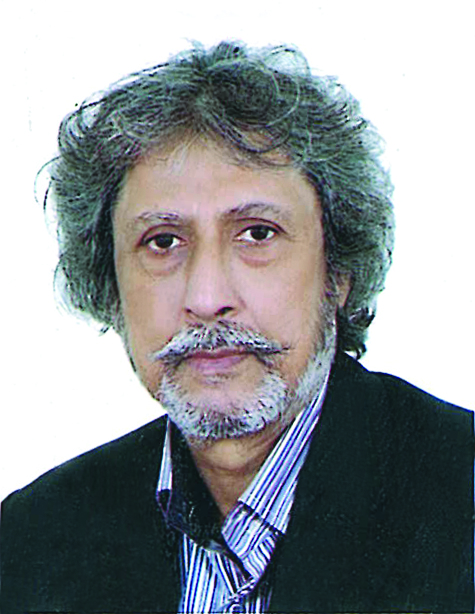Victory march towards Dhaka

The memory of the morning on 16 December, 1971 will remain etched in my mind forever as nothing like this could give me so much joy and peace ever. I looked at the faces around me- simple faces of village folks; wrinkled faces with tears in their eyes, chanting joi Bangla for the first time. Women folks sat down to make some rice cakes to offer to anyone passing by.
On the highway, rickshaw pullers gave free ride to freedom fighters going towards Demra. Villagers, young and old, touched the hands of Indian and Bangladeshi soldiers as they marched along the
Dhaka-Narshingdi highway towards Dhaka. Indian soldiers smiled and waved at everyone uttering bandhu, bandhu. I met an Indian army major near a tea stall at Purinda bazaar. We talked for a while seeping tea. He gave a vivid description of the ferocious battle for Narshingdi. They faced severe resistance from Pakistanis holed up in concrete bunkers on a higher ground firing with heavy machine guns from the other side of the Meghna river. But, when the Mitra Bahini started to cross the river on amphibian tanks, the firing stopped and Pakistanis fled towards Dhaka on the night of 14 December.
On 16 December at around 12 noon, I heard shouting of some people on the northern side of Purinda bazaar. They had captured a local Razakaar from the toilet of a house there.
The infamous Horzu Munshi used to pass information about the freedom fighters taking shelter in many villages around Rupganj, Saatgram and Araihazar. Freedom fighters have been trying to capture him but he remained traceless.
As he was brought to the bazaar, some young freedom fighters loaded their weapons and wanted to shoot him right there. But their commander intervened and told them to give him a good beating and then hand him over to the police. I heard that he was not that harmful as a Pakistani spy.
Near Pachrukhi bazaar, I saw a Pakistani troop carrier in a roadside canal heavily damaged. Locals told me it was about to cross the bridge in the morning on 1 3 December when an Indian helicopter appeared and bombed it out. Local Muktis had sent signal over radio about the vehicle carrying weapons towards Narshingdi.
The Dhaka-Narshingdi highway actually saw one of the earliest armed resistances early April. A big Pakistani army convoy was rolling towards Narshingdi early in the morning of 4 April. It was almost a two-mile long convoy carrying heavy arms and hundreds of troops to set up a base in Narshingdi.
When the front vehicles reached Bagmara bend about three miles from Purinda bazaar, some Bangalee army personnel hiding in the bushes opened fire with two light machineguns and Chinese rifles. The jeep carrying an officer and some troops immediately died in the ambush and others got injured.
The army convoy stopped there and troops took up position on both sides of the road. They began to fire indiscriminately killing some villagers in the distance. Bangalee resistant fighters kept firing for about 30 minutes and then retreated deeper into the village.
These Bangalee army personnel had fled from Gazipur Ordinance factory the night before and reached Baburhaat area when they heard of Pakistani army movement. Later that day, at about noon, two PAF Saber jets came low over Narshingdi and strafed the area killing some innocent people. That day, that morning, that sun will not appear in our life again. But we shall always remember them with due solemnity as our freedom came at a very high price. I remember many of my friends who never returned from the battle-fields.
We are a free nation today because of their sacrifice, and we must keep the thought in our hearts. Joi Bangla…
Advisory Editor, Bangladesh Post.



